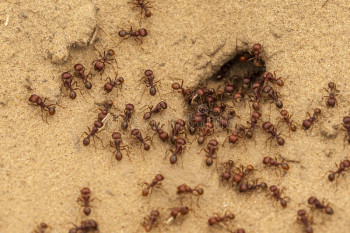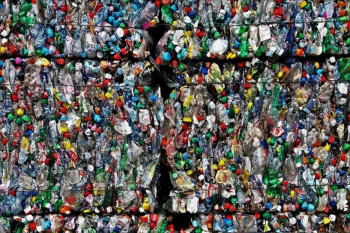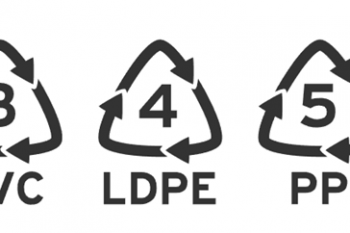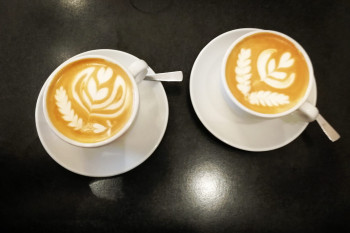© Pint of Science, 2025. Alle Rechte vorbehalten.
As one is used to at important events, I was dressing up as best as I could. Fancy clothes? Some crazy make-up maybe? Nope, more than wrong. It’s still Covid-19 times, you guys. Fuzzy hair, some worn-out T-shirt and sweatpants with Snoopy on it, that’s what I’m talking about. Anyway, where was I? In front of my computer, watching our pre-event of #pint22. At this point, I probably need to admit that I was not precisely well-prepared: I had run out of beer, hadn’t read the program, but still, I was excited for what was about to come.
The event started off with a young neuroscientist, Magdalena Boch, who is researching at the Wellcome Centre for Integrative Neuroimaging at the University of Oxford (crazy, right?!). But wait, it gets better: her passion and research focus lie in the investigation of emotion processing in dogs & humans and how this compares to each other. Yep, you read it correctly…dogs <3. Magdalena tries to zoom in on certain brain regions and their potential activity while presenting pictures to her (four-legged) test subjects showing human body parts or tennis balls. Brain activity is then measured with a device called functional MRI, or fMRI. But no worries, neither the dogs nor humans take any harm from this. While the procedures are non-invasive and all dogs need to be well-trained beforehand, you can basically think of an fMRI as a noisy, white space probe with you (or the dog) being the astronaut. In a nutshell, Magdalena’s results indicate that dogs may indeed process emotions in comparable brain regions as we (partially) do: the temporal lobe, which should ideally be located right above your ears.
While I was switching positions from the left corner of my couch to the right one, Sarah Zippusch was entering our virtual stage. A confident postdoc from Hannover Medical School who seemed eager to change the future of transplantation medicine. Rebuilding blood vessels from patient cells? Easy for Sarah. Here’s the recipe: extract patient cells from fat ‘aprons’, carefully cultivate and grow them, take some patient’s fibrin (representative of glue) and generate your object of desire by pouring your cell-fibrin-mixture into your prefabricated device, let it rest for a bit and finally centrifuge the construct to ensure its stability. Although this may sound like crazy science-magic, Sarah already got rewarded for all her effort: in a laboratory setting, her constructs seem to work, with blood vessels forming from provided cells. Simplified, this means Sarah’s research could potentially improve success rates of organ transplants by ensuring correct blood flow or nutrient exchange between patient and transplant tissue in the future. Applause, applause!
Out of nowhere my brain starts to play the 20th century fox intro when presenting the last speaker of our event. Well, it fits indeed. Antonia Peter, who came all the way from Krems via Edinburgh to Maastricht, has bravely decided to take on the fight against cancer. In a brief overview, Antonia explained how our immune system consists of two combat units: the innate, less specific and the adaptive one. Some key players, representing the courier between both units, are embodied by dendritic cells. The latter are Antonia’s holy grail of tackling cancer. To understand her approach of contributing to the generation of new immune therapeutics, you need to know that dendritic cells can easily take up former building bricks of e.g., pathogens or even degenerated cancer cells. More importantly, though, they fulfil their destiny by travelling to the adaptive immune cell unit and report what they’ve found. Immediately, an insane cascade starts: adaptive cells mature and turn into a special task force battling the troublemaker. Just like riding the bike, these immune cells will not forget their newly developed skills and can fend off another attack from the same troublemaker repeatedly. (As my text is getting longer and longer, you may realize how complex all these topics really are. But, hey, you’re still here!) One day, Antonia wants to isolate young dendritic courier cells from her tumor patients, equip them with detailed info on the target cancer and send mature, reliable couriers back to the patient’s blood stream. In an ideal world, her immune therapeutic approach will assist the patient’s immune system in eventually overcoming cancer in the future. Antonia, our fingers are crossed!
With a slight smile on my face, I will stop writing and turn off my computer now. The smile? All our speakers are tough, young women on a highway to a bright career. Being myself a female researcher, I’m simply happy that women finally start to define their space and role in science.
Lena
PS: If you are wondering what Lena is bubbling over about, you can still catch up on these phenomenal talks on our YouTube-channel




